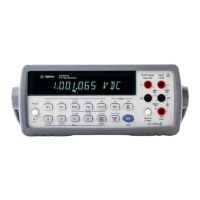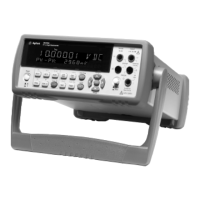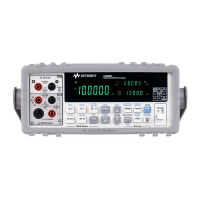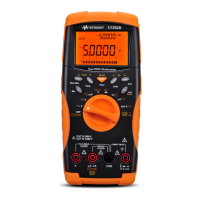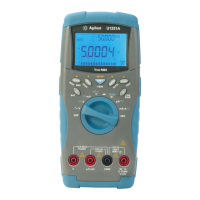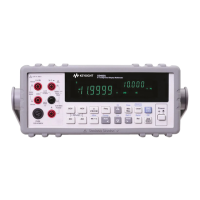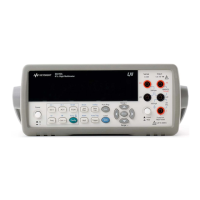86 Chapter 4 Making Measurements
with a 1 second interval between readings (this is shown in Figure 18).
10 OPTION BASE 1 !COMPUTER ARRAY NUMBERING STARTS AT 1
20 DIM Rdgs(8) !DIMENSION ARRAY FOR 8 READINGS
30 OUTPUT 722;"PRESET NORM" !TARM AUTO, TRIG SYN, DCV AUTORANGE
40 OUTPUT 722;"SWEEP 1,8" !1 SECOND INTERVAL, 8 READINGS/TRIGGER
50 ENTER 722; Rdgs(*) !SYN EVENT,ENTER EACH READING
60 PRINT Rdgs(*) !PRINT READINGS 80 END
70 END
Note When using the TIMER sample event or the SWEEP command, autorange
is disabled. You cannot use TIMER or SWEEP for AC or AC+DC voltage
measurements using the synchronous or random methods (SETACV SYNC
or RNDM), or for frequency or period measurements.
Making Delayed
Readings
The DELAY command allows you to specify a time interval that is inserted
between the trigger event and the first sample event. For example, in the
following program, the specified delay interval is 2 seconds and the SWEEP
interval is 1 second. Line 40 specifies 8 readings per trigger event. Figure 19
shows that the delay occurs between the trigger event (TRIG SGL) and the
first reading. The SWEEP interval then occurs between each successive
reading. In this example, the amount of time added to the total measurement
is 9 seconds.
10 OPTION BASE 1 !COMPUTER ARRAY NUMBERING STARTS AT 1
20 DIM Rdgs(8) !DIMENSION ARRAY FOR READINGS
30 OUTPUT 722;"PRESET NORM"!TARM AUTO, TRIG SYN, DCV AUTORANGE
40 OUTPUT 722;"SWEEP 1,8"!1 SECOND INTERVAL, 8 READINGS/TRIGGER
50 OUTPUT 722;"DELAY 2"!2 SECOND DELAY
60 ENTER 722;Rdgs(*)!ENTER READINGS
70 PRINT Rdgs(*) !PRINT READINGS
80 END
Figure 18. TIMER or SWEEP interval
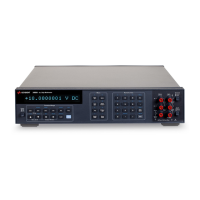
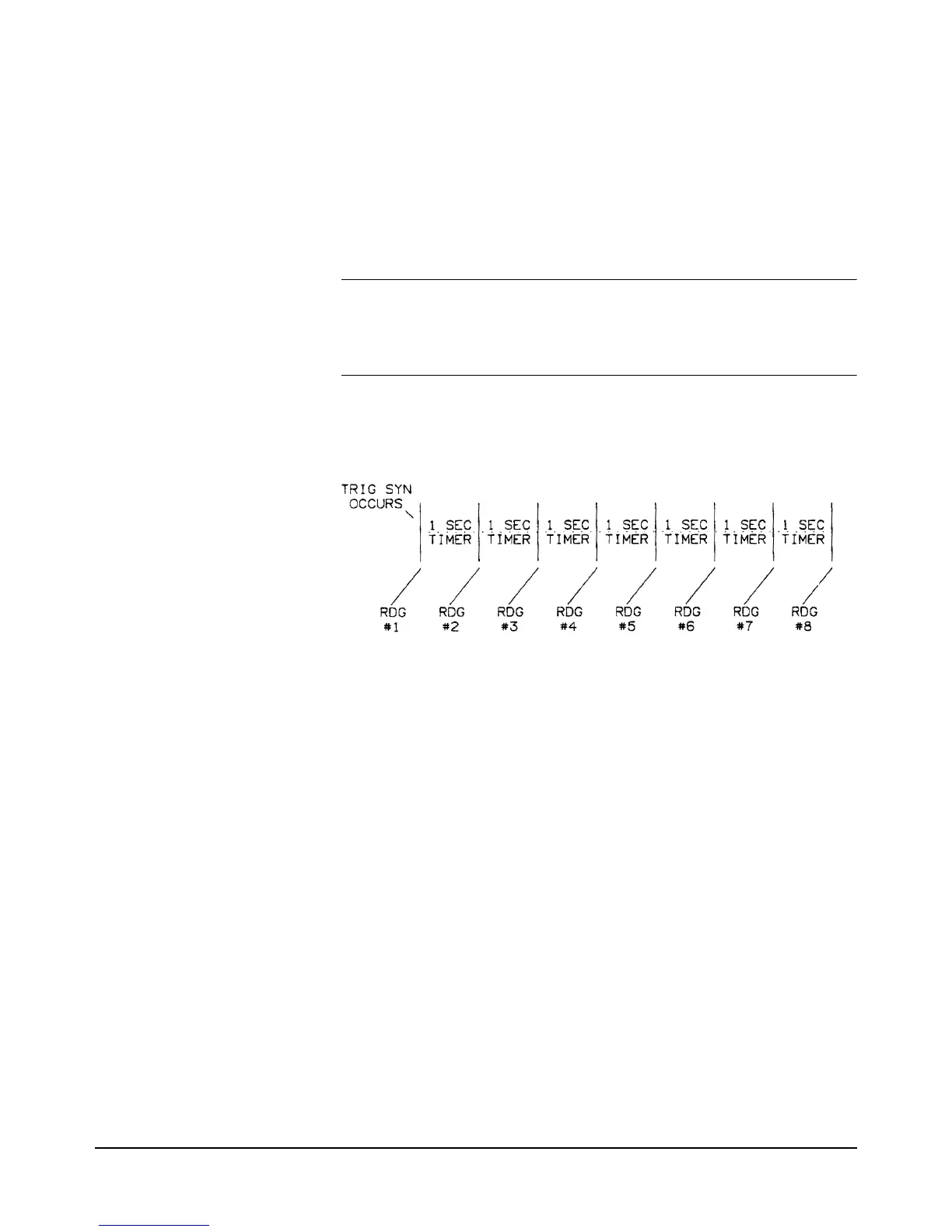